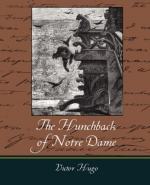|
This section contains 551 words (approx. 2 pages at 300 words per page) |

|
The Hunchback of Notre Dame, An Analysis of the 1939 Film
Summary: Reviews the 1939 film version of Victor Hugo's novel, The Hunchback of Notre Dame. Examines how themes are observed in various forms through Gothic characteristics such as extreme contrasts, death, grotesque forms, and religious associations. Discusses how many of the film's settings further support the Gothic theme.
In the 1939 film, The Hunchback of Notre Dame, adapted from the novel written by Victor Hugo, the themes are obvious in numerous scenes of the film; however, in other scenes themes are hidden to eyes of the audience and revealed in significant images or actions. The themes are observed in various forms through Gothic characteristics such as, extreme contrasts, death, grotesque forms, and religious associations. These themes provided a breakdown in rule to a previously calm society.
Extreme contrasts were portrayed in the two brothers, one was a priest, and the other brother was a high judge. The two brothers' daily wardrobe was yet another example of extreme contrast; one being dressed in white while the other in black. The extreme contrasts seen in these two characters intensified a sense of truth. The theme of death was revealed through the death of Captain Phoebus, Esmeralda's lover, who was...
|
This section contains 551 words (approx. 2 pages at 300 words per page) |

|


